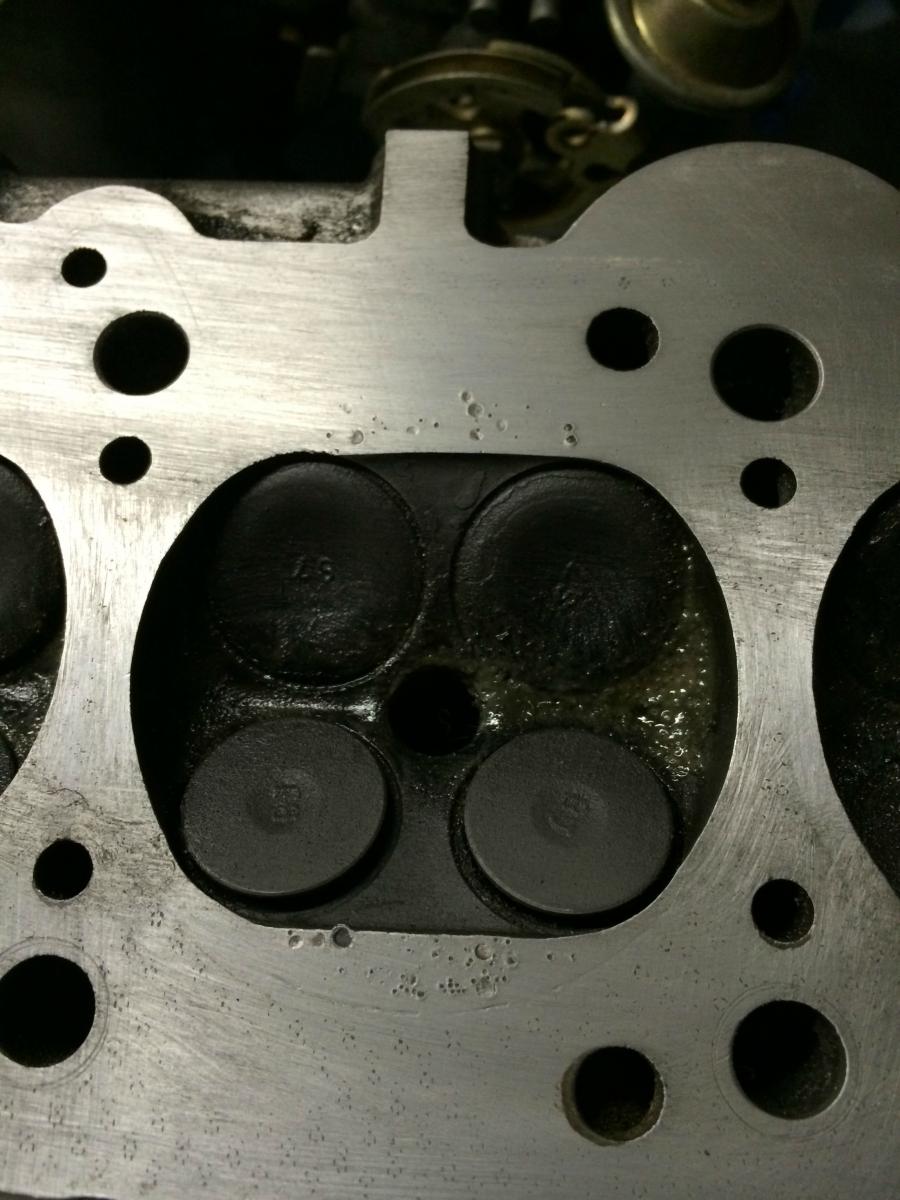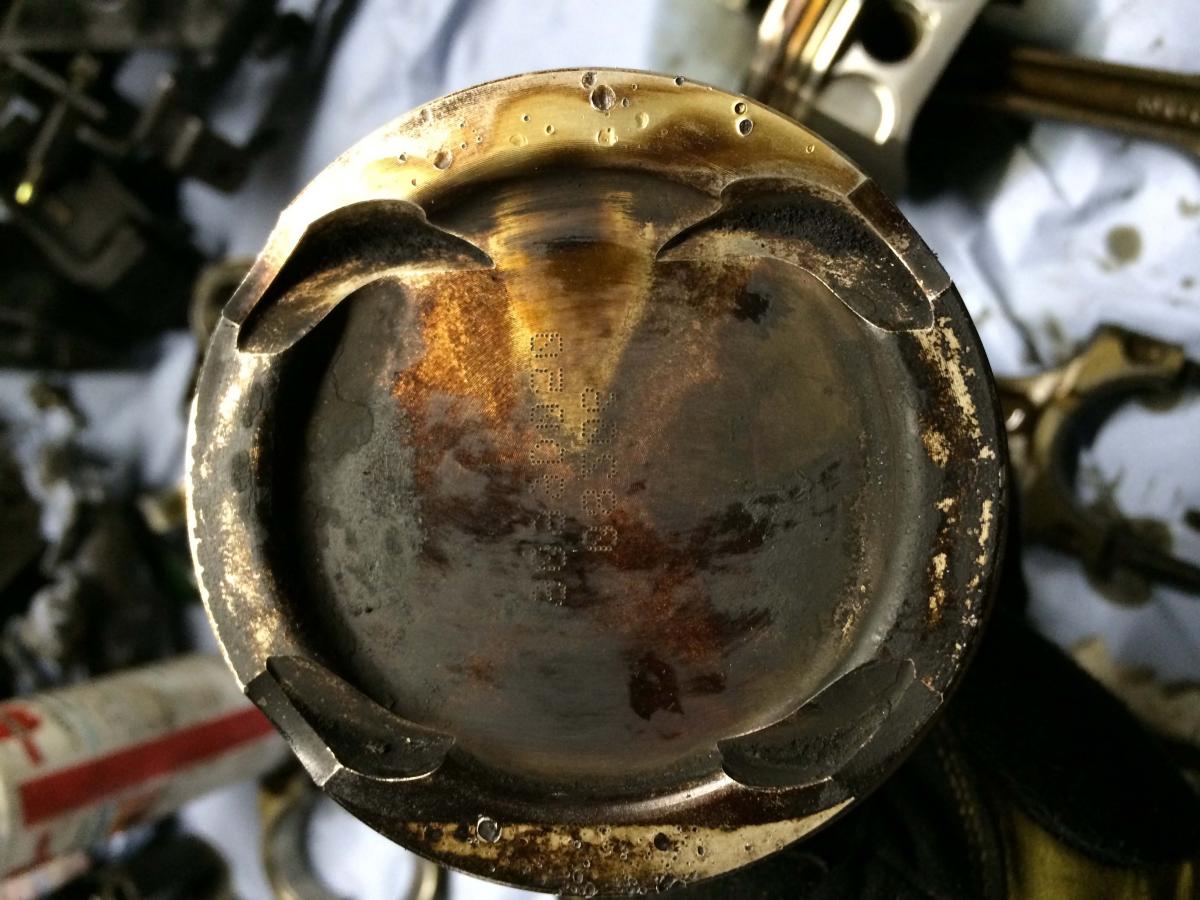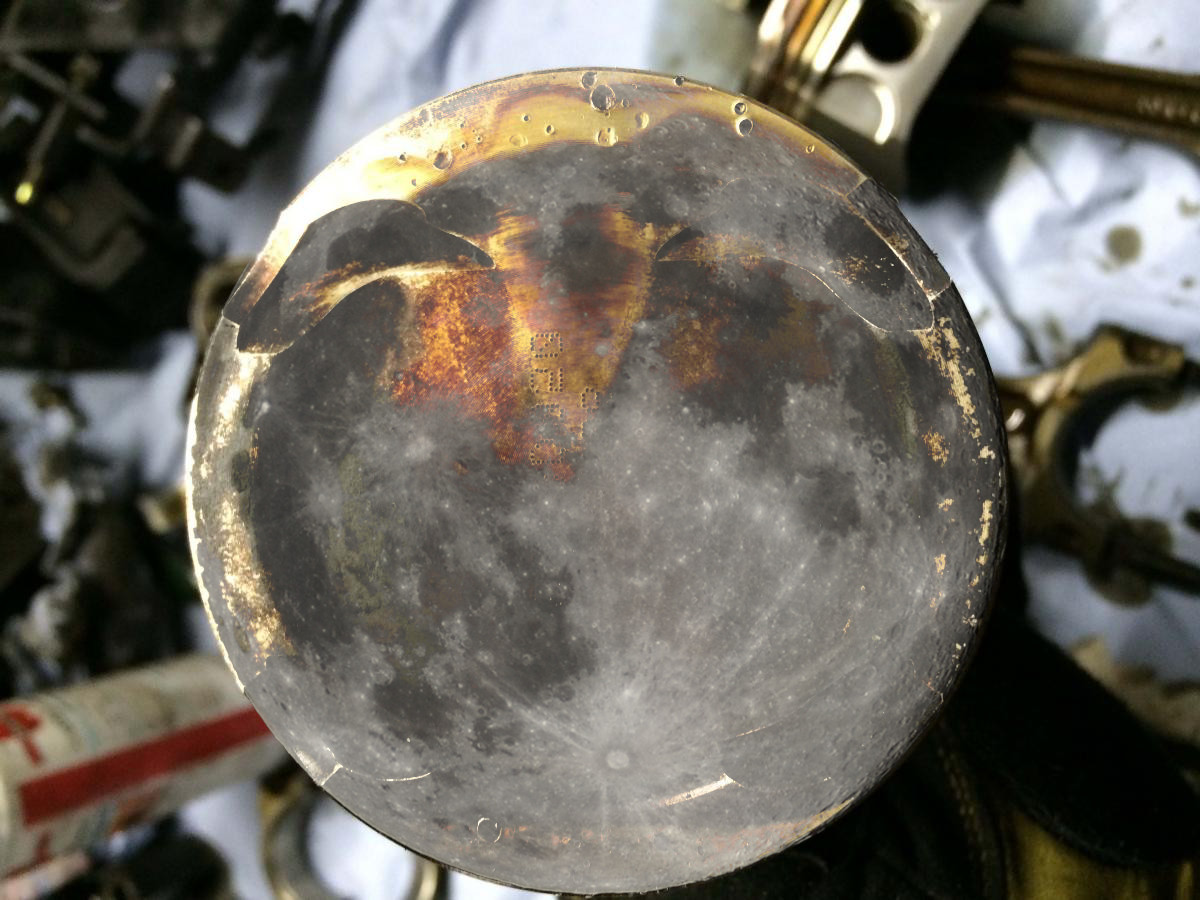Hits in piston and head
#21
Elite Member
iTrader: (1)
Join Date: May 2009
Location: Jacksonville, FL
Posts: 5,155
Total Cats: 406
Youre kidding right?
Pre-ignition can cause detonation, and vice versa, but they are not one in the same. Detonation is when instead of there being a burn of the mixture, there is an instantaneous detonation of the mixture.
http://www.not2fast.com/NACA/naca-tn-93.pdf
http://www.not2fast.com/NACA/naca-report-493.pdf
http://www.not2fast.com/NACA/naca-report-855.pdf
http://www.not2fast.com/NACA/naca-tm-899.pdf
Im not saying it wasnt foreign material, but my money is on detonation.
Those uncanny, round, pits are a fairly common sign of detonation. Either that or people have been accidentally ingesting BBs for years.
Pre-ignition can cause detonation, and vice versa, but they are not one in the same. Detonation is when instead of there being a burn of the mixture, there is an instantaneous detonation of the mixture.
http://www.not2fast.com/NACA/naca-tn-93.pdf
http://www.not2fast.com/NACA/naca-report-493.pdf
http://www.not2fast.com/NACA/naca-report-855.pdf
http://www.not2fast.com/NACA/naca-tm-899.pdf
Im not saying it wasnt foreign material, but my money is on detonation.
Those uncanny, round, pits are a fairly common sign of detonation. Either that or people have been accidentally ingesting BBs for years.
#22
Youre kidding right?
Pre-ignition can cause detonation, and vice versa, but they are not one in the same. Detonation is when instead of there being a burn of the mixture, there is an instantaneous detonation of the mixture.
http://www.not2fast.com/NACA/naca-tn-93.pdf
http://www.not2fast.com/NACA/naca-report-493.pdf
http://www.not2fast.com/NACA/naca-report-855.pdf
http://www.not2fast.com/NACA/naca-tm-899.pdf
Im not saying it wasnt foreign material, but my money is on detonation.
Those uncanny, round, pits are a fairly common sign of detonation. Either that or people have been accidentally ingesting BBs for years.
Pre-ignition can cause detonation, and vice versa, but they are not one in the same. Detonation is when instead of there being a burn of the mixture, there is an instantaneous detonation of the mixture.
http://www.not2fast.com/NACA/naca-tn-93.pdf
http://www.not2fast.com/NACA/naca-report-493.pdf
http://www.not2fast.com/NACA/naca-report-855.pdf
http://www.not2fast.com/NACA/naca-tm-899.pdf
Im not saying it wasnt foreign material, but my money is on detonation.
Those uncanny, round, pits are a fairly common sign of detonation. Either that or people have been accidentally ingesting BBs for years.
Your cited papers date back as far as 1922. For much of this the 20th century, there were two competing theories regarding engine knock, the autoignition theory, and detonation theory. For decades now, the scientific and engineering community as practically unanimously accepted the autoignition theory as standard. This was what is taught at a university if you take, for example, a masters level course on combustion.
Unfortunately, it seems the 'aftermarket' hasn't figured this out yet.
#23
Your cited papers date back as far as 1922. For much of this the 20th century, there were two competing theories regarding engine knock, the autoignition theory, and detonation theory. For decades now, the scientific and engineering community as practically unanimously accepted the autoignition theory as standard. This was what is taught at a university if you take, for example, a masters level course on combustion.
Unfortunately, it seems the 'aftermarket' hasn't figured this out yet.
Unfortunately, it seems the 'aftermarket' hasn't figured this out yet.
Nobody ******* cares.

OP: The head can obviously be fixed, unless higher resolution shows more severe damage. If you don't mind opening the motor up again, sure, re-use the piston. Be sure to sand down and lips or sharp edges.
For my time and money, I'd replace it. It just doesn't makes sense, to me, to re-use it. However, if you can't find a replacement, you're obviously mechanically inclined to the point which you could "easily" replace it, if need be.
#24
Elite Member
iTrader: (1)
Join Date: May 2009
Location: Jacksonville, FL
Posts: 5,155
Total Cats: 406
Interesting. So other than semantics what is the practical difference?
If it's not detonation of the mixture outside of the flame front is it something fundamentally different or is it a similar condition given a scientifically accurate name?
If it's not detonation of the mixture outside of the flame front is it something fundamentally different or is it a similar condition given a scientifically accurate name?
#25
It's not just semantics, the two words actually describe very different phenomenon. What you're describing is correct, and is the cause of knock, but it is known as autoignition. A portion of air/fuel mixture that is outside of the advancing flame front (commonly called 'end gas') autoignites due to the temperature and pressure history which it's been exposed to. This end gas burns very rapidly, and is responsible for the rapid pressure rise and waves within the cylinder. Autoignition is also the principal by which diesel engines operate. The detonation theory differed in that it hypothesized that the flame front speed accelerates to sonic velocity, rapidly consuming the remaining air/fuel mixture (detonation), resulting in the pressure rise. Optical/video studies of actual combustion have shown the autoignition theory to be the correct one, by observing combustion of the end gas prior to the flame front reaching it.
Scott,
Ignorance is bliss. Go ahead and crawl back to your hole.
#29

http://imgur.com/iuIIFGT

http://imgur.com/oLMsnju
On my way to a professional shop. Lets get another opinion

Will keep you posted!
#34
Elite Member
iTrader: (1)
Join Date: May 2009
Location: Jacksonville, FL
Posts: 5,155
Total Cats: 406
Im not even arguing. With the higher res it does look more like it ingested something that made some big pits before getting ground down and made some smaller pits.
Unless maybe he wants to argue that it does not look like the moon. In which case Im down for whatever.
Unless maybe he wants to argue that it does not look like the moon. In which case Im down for whatever.
#35
Tom,
It's not just semantics, the two words actually describe very different phenomenon. What you're describing is correct, and is the cause of knock, but it is known as autoignition. A portion of air/fuel mixture that is outside of the advancing flame front (commonly called 'end gas') autoignites due to the temperature and pressure history which it's been exposed to. This end gas burns very rapidly, and is responsible for the rapid pressure rise and waves within the cylinder. Autoignition is also the principal by which diesel engines operate. The detonation theory differed in that it hypothesized that the flame front speed accelerates to sonic velocity, rapidly consuming the remaining air/fuel mixture (detonation), resulting in the pressure rise. Optical/video studies of actual combustion have shown the autoignition theory to be the correct one, by observing combustion of the end gas prior to the flame front reaching it.
Scott,
Ignorance is bliss. Go ahead and crawl back to your hole.
It's not just semantics, the two words actually describe very different phenomenon. What you're describing is correct, and is the cause of knock, but it is known as autoignition. A portion of air/fuel mixture that is outside of the advancing flame front (commonly called 'end gas') autoignites due to the temperature and pressure history which it's been exposed to. This end gas burns very rapidly, and is responsible for the rapid pressure rise and waves within the cylinder. Autoignition is also the principal by which diesel engines operate. The detonation theory differed in that it hypothesized that the flame front speed accelerates to sonic velocity, rapidly consuming the remaining air/fuel mixture (detonation), resulting in the pressure rise. Optical/video studies of actual combustion have shown the autoignition theory to be the correct one, by observing combustion of the end gas prior to the flame front reaching it.
Scott,
Ignorance is bliss. Go ahead and crawl back to your hole.
Cool.
Good thing the rest of us plebs know exactly what 99.99% of the world is referring to when they say "detonation."
Please make a new thread in which you educate the ignorant masses.
#36
Moderator


iTrader: (12)
Join Date: Nov 2008
Location: Tampa, Florida
Posts: 20,676
Total Cats: 3,017
Something mashed into the head and pushed metal away from the center. I have seen lots of detonation and also some pretty amazing FOD and that isn't even close to a detonation pattern or style. It is most definitely FOD.
EDIT: FOD=foreign object damage
EDIT: FOD=foreign object damage
#38
So, I talked to a professional shop. These guys are doing nearly all engines of all brands in our area. They say it was a foreign object and its not a problem at all to use the piston again. Just sand down the edges and its good to go.
And I cannot get a replacement, pistons are different meanwhile...
We will put it together in the next 2 weeks and see what happens.
And I cannot get a replacement, pistons are different meanwhile...
We will put it together in the next 2 weeks and see what happens.
Thread
Thread Starter
Forum
Replies
Last Post
stoves
Suspension, Brakes, Drivetrain
5
04-21-2016 03:00 PM














